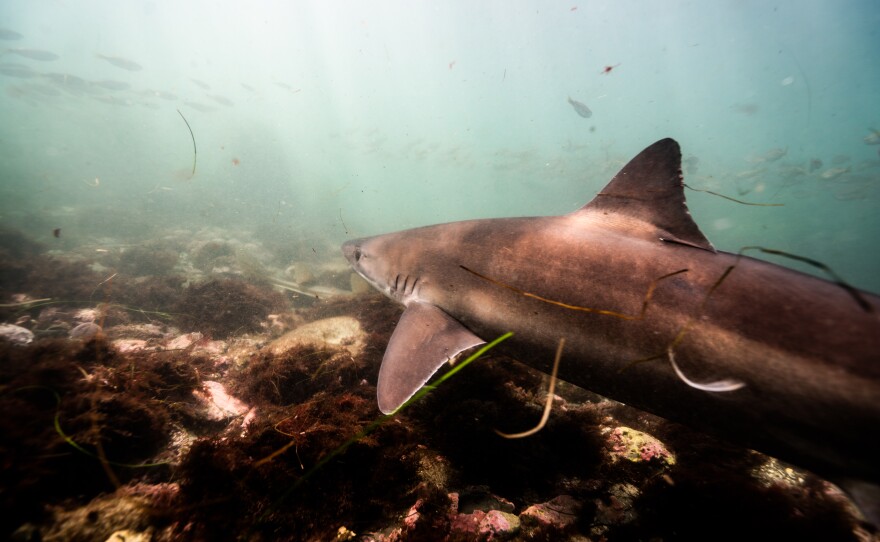A seven-year study of California's soupfin sharks by San Diego researchers has revealed the first conclusive case in the animal kingdom of triennial philopatry — meaning the sharks return to the same location every three years, researchers said Wednesday.
Analyzing the tracking data from 34 female soupfin sharks tagged with acoustic transmitters, Scripps Institution of Oceanography researcher and UC San Diego professor Andrew Nosal discovered that the sharks exhibit a triennial migratory cycle, returning to the tagging site off La Jolla every three years.
The study, published in Wednesday's Journal of Applied Ecology, sheds light on their migration and reproductive cycles and lays the groundwork for potential management strategies amid conservation concerns.
"During the first three years of tagging, none of the sharks returned to La Jolla after leaving," Nosal said. "We figured the sharks were simply wide-ranging and did not exhibit philopatry.
"Then, in the fourth year, we detected sharks tagged in the first year, and in the fifth year detected sharks tagged in the second year. This indicated a three-year cycle of migration and philopatry, which coincides with their three-year reproductive cycle," he continued.
Nosal and his colleagues tagged these soupfin sharks over five summers — from 2013 to 2017 — off San Diego beaches, where the sharks are commonly seen congregating in large numbers in the warm shallows.
Using field ultrasound examinations, Nosal confirmed the sharks were pregnant females, likely using the warm water to incubate their developing embryos. The team then tracked the sharks' movements using a coastal array of more than 300 underwater acoustic receivers positioned along the West Coast.
Most sharks left La Jolla in the fall or winter after tagging, spending the next two years between the Northern Channel Islands and San Francisco Bay, with a few traveling as far as the Pacific Northwest. In these areas, Nosal believes the sharks give birth, feed and mate before returning to La Jolla, where they ovulate and undergo gestation in the warmer waters.
Of the sharks tagged, at least 15% were captured by gillnet fishers in Mexico. Last year, soupfin sharks were elevated to critically endangered status globally by the International Union for Conservation of Nature, due to heavy fishing pressure and steep population declines worldwide.
Soupfin sharks, also known as tope and school sharks, are found worldwide in temperate coastal waters, growing to a length of over six feet and feeding mainly on fish and invertebrates.
Nosal is hopeful that this research may inform any future management strategies, particularly in the United States.
"Suppose managers are monitoring female soupfin shark abundance at some location, such as La Jolla," he said. "High shark abundance three years in a row may suggest a stable population, but, given the triennial migration cycle, these may actually be three different breeding cohorts within the population. Managers could only compare apples to apples at this location every three years to track population trends."
Nosal suspects the other populations of soupfin sharks also demonstrate triennial philopatry — a term meaning "home-loving" — but future long-term tracking studies would be needed to confirm this.







